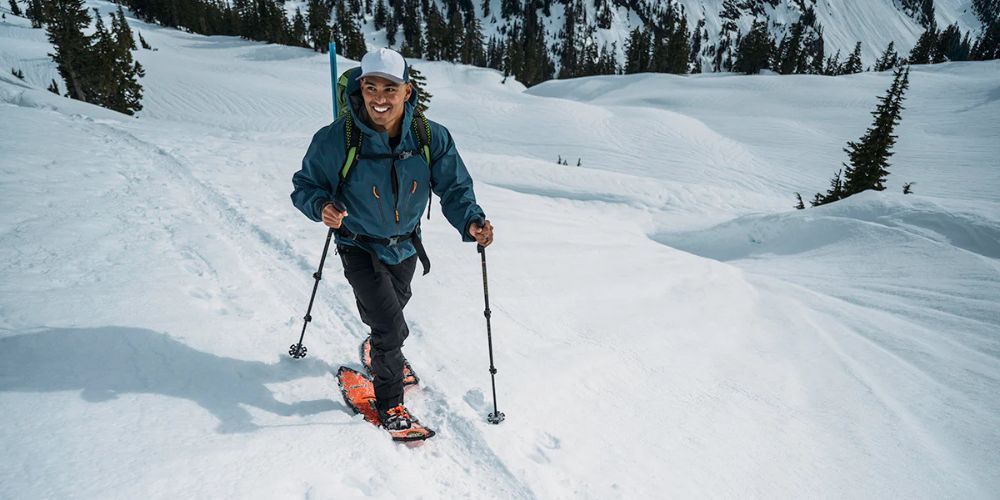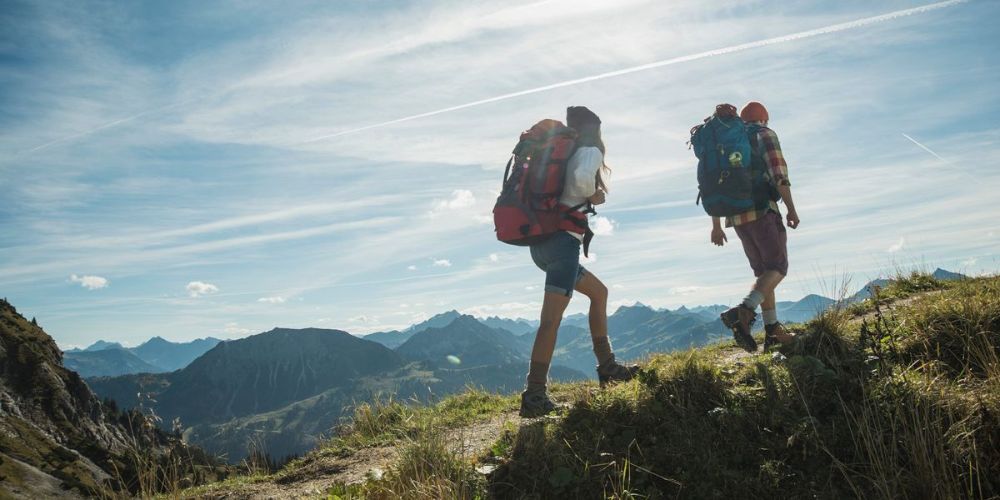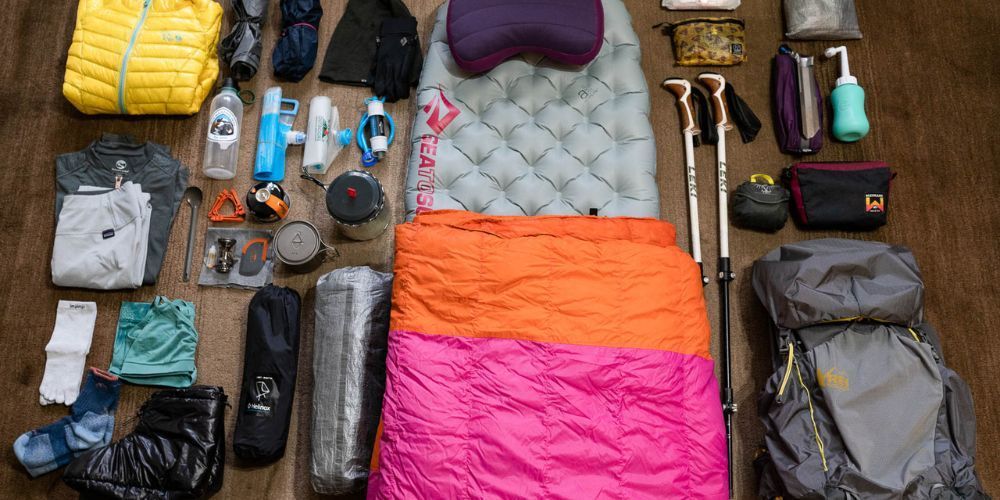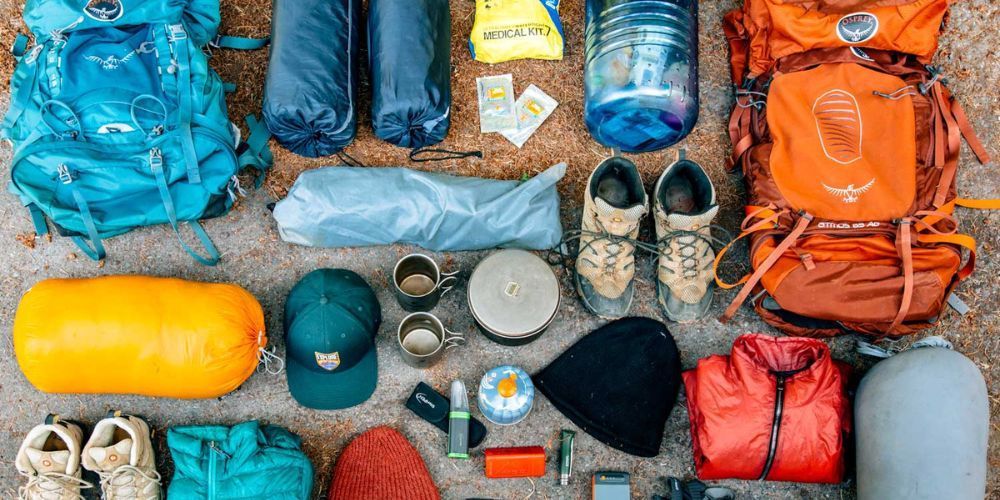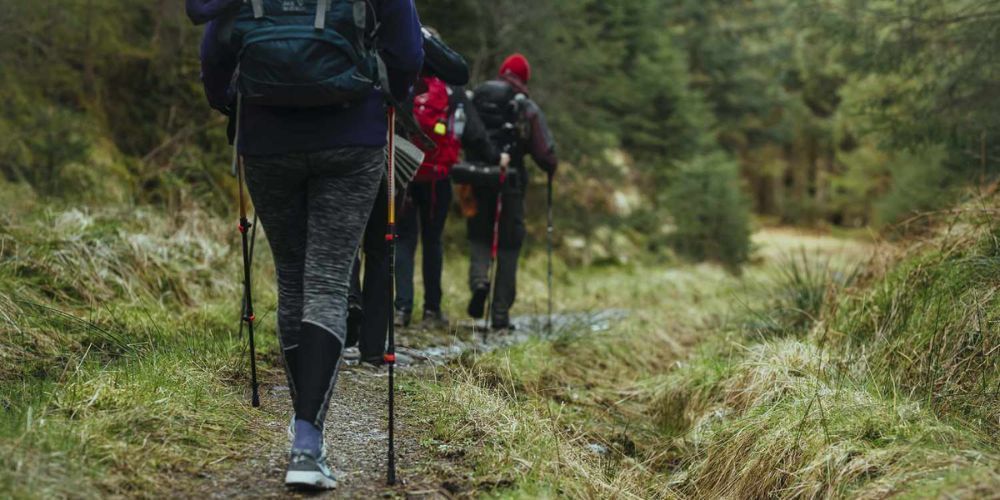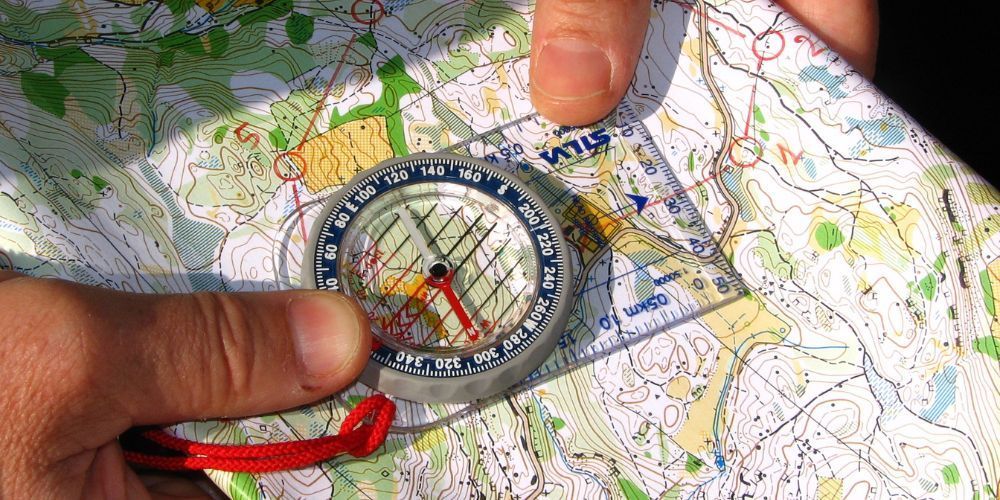How to Choose the Best Backpacking Sleeping Pad for a Comfortable Night's Sleep
Finding the right sleeping pad can be the difference between waking refreshed or feeling drained on your backpacking adventure. We understand that balancing comfort, weight, and durability is crucial because nothing dampens a stunning sunrise hike more than a restless night wrestling with discomfort.
Imagine having trekked through rugged trails all day, only to finally settle down at your campsite, knowing you’ll rest soundly through the night. We've gathered extensive insights on foam, inflatable, and self-inflating pads so you can choose wisely and enhance your outdoor experience. Using expert recommendations and firsthand experiences, we’ll guide you step-by-step in making the perfect choice for your needs – starting with understanding not all sleeping pads are created equal.
Our top recommendation for a backpacking sleeping pad is the Therm-a-Rest NeoAir XTherm NXT , known for its exceptional 7.3 R-value, lightweight design, and excellent insulation. For those seeking a budget-friendly option with good durability, we recommend the NEMO Switchback , which provides reliable performance on the trail. When choosing a backpacking sleeping pad, consider factors such as weight, warmth, packed size, quality of construction, and overall value to find the best fit for your needs.
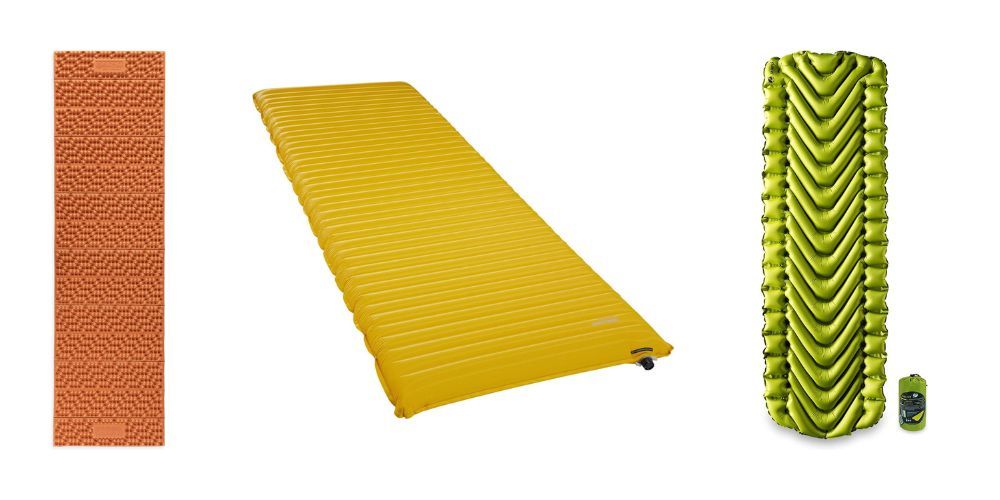
Types of Backpacking Sleeping Pads
When it comes to choosing the right sleeping pad for your backpacking adventure, understanding the different types available is essential. Let's take a closer look at each type of sleeping pad:
Foam Pads
Foam pads, such as the NEMO Switchback , are designed to be lightweight and nearly indestructible. These pads are fantastic in terms of durability and are far less prone to punctures compared to inflatable or self-inflating pads. They also provide adequate insulation, making them a great budget-friendly option for backpackers. The only downside to foam pads is that they tend to be bulkier, taking up more space in your pack. However, their reliability and resilience make them an excellent choice for rugged outdoor adventures where durability is a top priority.
Additionally, foam pads are fantastic for those who prioritize simplicity and ease of use. They don't need to be inflated or set up; you simply unroll them and lay them down, making them ideal for quick setup when you're tired from a long day of hiking. This makes them a popular choice among minimalist backpackers or those who are seeking a straightforward solution without compromising on performance.
Inflatable Pads
Inflatable pads, like Therm-a-Rest's NeoAir series , are known for providing superior comfort and excellent packability. These pads offer a high level of customization since you can adjust the firmness by regulating the amount of air inside. Their compact size when deflated makes them an attractive option for backpackers concerned about minimizing pack weight and space. However, it's important to handle inflatable pads with care to avoid punctures, as they can render the pad unusable until repaired.
But don't let their delicate nature deter you – with proper care and maintenance, inflatable pads can provide unparalleled comfort and support, ensuring a restful night's sleep even on rough terrain.
Self-Inflating Pads
Self-inflating pads combine the benefits of foam and air pads by integrating foam insulation with an air chamber. This combination provides added convenience and improved comfort compared to traditional foam pads. While they may be heavier and more expensive than foam alternatives, self-inflating pads strike a balance between durability, comfort, and packability—making them an appealing option for backpackers seeking an all-encompassing solution.
For instance, the hybrid design allows you to enjoy the cushioning of foam while still appreciating the benefits of adjustable firmness offered by air chambers. This convenience can make a significant difference in how well-rested you feel after a night under the stars.
Understanding the features and limitations of each type of sleeping pad equips you with valuable insights when selecting the most suitable option for your backpacking needs. Each type offers unique advantages tailored to different preferences, ensuring that there's a perfect sleeping pad out there for every backpacker's requirements without compromising on quality or comfort.
Now that we've explored the various types of backpacking sleeping pads available, let's move on to factors you should consider when choosing the best sleeping pad for your outdoor adventure.
Insulation Features
When you're out in the wild, proper insulation can make all the difference between a good night's sleep and a restless, uncomfortable one. Insulation is what keeps your body heat from escaping and being stolen by the cold ground beneath you. That's why understanding the R-value of a sleeping pad is crucial.
R-Value Explained: The R-value measures how effectively a sleeping pad insulates you from the cold ground. The higher the R-value, the better it is at keeping you warm. So, if you're planning to venture into chilly weather or high altitudes, you'll want a sleeping pad with a higher R-value to ensure you stay warm throughout the night.
But it's not just about cold weather. Even in relatively warmer conditions, such as summer nights in the mountains, a higher R-value means that your body heat won't dissipate into the ground, helping you sleep comfortably. Understanding the R-value allows you to choose a pad that meets your specific insulation needs, whether for cold winter treks or balmy summer backpacking trips.
Choosing the Right R-Value: Generally, an R-value of 4 or above is recommended for cold weather. This level of insulation ensures that even when temperatures drop, your sleeping pad will maintain a comfortable warmth throughout the night.
Example - Therm-a-Rest NeoAir XTherm NXT
This pad boasts an impressive 7.3 R-value, making it an excellent choice for extreme cold conditions while maintaining a low weight of only 16 ounces. Its remarkable insulation efficiency puts it among the top options for those seeking warmth in harsh outdoor environments without compromising on portability.
Understanding the intricacies of R-values will help you select a backpacking sleeping pad that aligns perfectly with your insulation requirements, ensuring a restful and comfortable night's sleep regardless of the external conditions.
Now equipped with knowledge on choosing a comfortable backpacking sleeping pad , it's time to consider crucial factors such as weight and packability to enhance your outdoor experience.
Weight and Packability
When it comes to backpacking, every ounce matters. The weight of your sleeping pad can significantly impact your trekking experience. Imagine navigating rugged terrain with a heavy, bulky sleeping pad strapped to your back – not the most enjoyable thought, is it?
Lightweight is the name of the game for ultralight backpackers – those adventurous souls who prefer to carry minimal weight while still ensuring a good night’s sleep. Options like the Therm-a-Rest NeoAir XLite NXT weighing a mere 12 ounces are perfect for minimizing pack weight without sacrificing comfort. It's akin to having a comfortable cloud that you can deflate and pack away when it's time to get moving.
For those not entirely committed to going ultralight but still wanting to shave off those extra ounces, the Klymit Static V2 offers a balanced solution. Weighing just 16 ounces and packing down smaller than traditional foam pads, the Static V2 provides an excellent mid-range option for backpackers who need a good compromise between weight and pack size.
These two options align perfectly with what many outdoor enthusiasts seek – balancing comfort with practicality.
Next, we'll explore how the size of the pad when packed can significantly impact your trekking experience and what you should look out for when it comes to packability and convenience on the trail.
Now, let's dive into compact options and why they're essential for your backpacking journey.
Comfort and Thickness
When you're out in the wilderness, a good night's sleep is everything. So, let's talk about what makes a sleeping pad comfortable and how thickness plays a crucial role.
A thicker pad is key when it comes to comfort, especially if you are hiking in areas with uneven ground. Just like how a thicker mattress provides better support for your back at home, a thicker sleeping pad offers more cushioning against rocks, roots, and rough terrains. Imagine resting on a plush carpet versus a hard floor—your sleeping pad serves the same purpose in the wild. The Nemo Quasar 3D Insulated is an excellent example of a pad designed with comfort in mind, offering 3.5 inches of luxurious cushioning that allows for restful sleep even on challenging surfaces.
But thickness isn't the only factor to consider; the surface texture of the sleeping pad also plays a significant role in enhancing your comfort. Look for pads with textured or non-slip surfaces as they prevent you from sliding off during the night, which can be quite common with smoother pads. After all, there's nothing worse than waking up in the middle of the night finding yourself slowly slipping off your sleeping pad.
One way to think about it is considering how different textures affect your comfort. A smooth surface may feel nice at first but can become slippery and uncomfortable during movement, just like walking on ice. On the other hand, textured surfaces provide better grip and stability, keeping you snug in place throughout the night.
So when choosing a backpacking sleeping pad, focus on both thickness and surface texture to ensure you're set for a restful sleep under any outdoor condition. Because after all, being well-rested is essential when you're conquering nature's obstacles day by day.
In the world of outdoor gear, durability and materials form the backbone of reliable equipment. Let's explore how these factors contribute to the longevity and effectiveness of backpacking sleeping pads.
Durability and Materials
When you're out camping in the wild, your backpacking sleeping pad becomes your best friend. It keeps you comfortable and warm throughout the night, so ensuring its durability is crucial if you want it to last through multiple adventures. So, what types of materials are best for this kind of gear?
First of all, ripstop nylon is a popular choice for backpacking sleeping pads because it helps prevent tears or rips from getting bigger, ensuring that minor damage doesn't escalate.
TPU Lamination
Another critical aspect to consider is TPU lamination, which significantly enhances durability. Thermoplastic Polyurethane (TPU) provides a protective layer against wear and tear when used to laminate the fabric of a sleeping pad, thanks to its high strength, flexibility, and resistance to oils and abrasions.
Using high-quality materials like these can guarantee that your sleeping pad can withstand rough handling and terrain without wearing out easily over time.
For instance, the Big Agnes insulated Q-Core deluxe sleeping pad is made from robust materials that contribute to its longevity even with frequent use. This highlights that it's not just about the price but also about the materials from which it's constructed.
Moreover, it's essential to have a repair kit on hand even with the sturdiest options available. Sometimes accidents happen in nature, and even the most rugged pads can suffer punctures. Having a patch kit handy can save a trip from becoming uncomfortable due to a deflated pad.
Think of it as carrying a spare tire when driving; sometimes you might get a flat tire, and having that repair kit will save you from being stranded on the side of the road.
So, keep an eye out for these materials when choosing your backpacking sleeping pad—after all, it's better to be safe than sorry!
In the world of backpacking sleeping pads , quality is paramount. Now, let's move on to explore some top recommendations that stand out in this category.
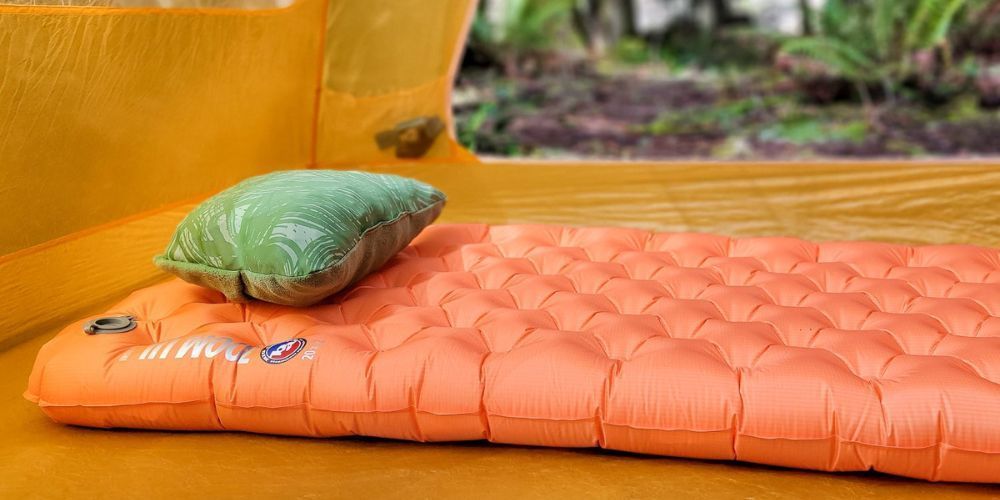
Top Recommended Sleeping Pads
Choosing the best backpacking sleeping pad can be a crucial decision when it comes to getting a good night's rest in the wilderness. The right pad can make all the difference, ensuring you wake up feeling refreshed and ready to tackle the day's adventures. Here are some top recommendations to consider.
Therm-a-Rest NeoAir XTherm NXT
The Therm-a-Rest NeoAir XTherm NXT is an exceptional choice for backpackers who prioritize warmth, comfort, and durability. With an impressive R-value of 7.3, this sleeping pad provides excellent insulation against cold surfaces, making it ideal for use in various seasons. Despite its high R-value, the NeoAir XTherm NXT remains lightweight at 16 ounces, ensuring that it won't weigh you down during your hike. Additionally, its compact pack size makes it easy to transport, fitting seamlessly into your backpack without taking up precious space.
Klymit Static V2
For budget-conscious backpackers seeking a reliable sleeping pad that doesn't compromise on quality, the Klymit Static V2 is a standout option. Weighing 17.7 ounces and boasting an R-value of 1.3, the Static V2 offers excellent value for its price point. Its wider design provides ample room for movement during sleep, and its compactness ensures easy packing and transportation. While not as insulated as other options, the Static V2 still delivers decent comfort and is an affordable entry point for those new to backpacking.
When choosing the right backpacking sleeping pad, it's essential to consider factors such as weight, warmth (R-value), packed size, construction quality, and personal preferences.
NEMO Quasar 3D Insulated
If top-tier comfort and support are your primary concerns, the NEMO Quasar 3D Insulated is worth considering. Weighing 25 ounces with an R-value of 3.3, this sleeping pad offers generous thickness and a supportive structure that prioritizes comfort without compromising on quality. Its excellent pump sack inflation system simplifies setup, allowing you to quickly prepare your sleeping pad for a restful night's sleep. While slightly heavier compared to other options, the Quasar 3D Insulated delivers superb comfort at a fair price point.
As you weigh these options and consider your specific needs, remember that finding the perfect backpacking sleeping pad involves balancing various factors to ensure a comfortable and restorative experience during outdoor excursions.

Choosing the Perfect Pad for Your Needs
Selecting the right backpacking sleeping pad can significantly enhance your outdoor experiences. It's crucial to consider several factors to ensure that you find the ideal fit for your specific requirements. Here are some key aspects to weigh as you navigate the wide array of options available:
Assess Your Priorities
First, think about what matters most to you – is it weight, comfort, insulation, or price? If you're planning long-distance hikes or backpacking trips, prioritizing a lighter pad like the Therm-a-Rest NeoAir XLite NXT would help alleviate the physical strain of carrying it over extended periods. On the other hand, if maximizing comfort is at the top of your list, you might want to consider investing in a more substantial pad that offers enhanced cushioning without compromising excessive weight.
Beyond just looking at the numbers on paper, it's essential to assess your individual preferences and needs when deciding which features matter most. While weight might be a crucial factor for one person, another might be more concerned with having ample insulation for chilly nights. By considering these priorities, you'll be better equipped to find a sleeping pad that aligns perfectly with your unique camping or hiking style.
Personal Sleep Style
Understanding and acknowledging your personal sleep style is another critical consideration when selecting a backpacking sleeping pad. Side sleepers often benefit from thicker, more cushioned options like the NEMO Quasar 3D Insulated , which provide excellent support and relieve pressure points. Back sleepers, on the other hand, may find thinner pads adequate and more lightweight without sacrificing comfort or support.
Your preferred sleeping position can significantly impact your comfort level while out in the wilderness. Therefore, tailored details like pad thickness and firmness play a vital role in ensuring that you get a good night's rest under various conditions.
Climate Considerations
The climatic conditions of your hiking or camping destination should heavily influence your choice of sleeping pad.
In colder climates, it becomes paramount to prioritize a pad with a higher R-value to guarantee sufficient warmth during frigid evenings. The R-value indicates a pad's ability to insulate and resist heat loss – an essential feature for maintaining comfortable sleeping temperatures in challenging conditions.
For instance, the Therm-a-Rest NeoAir XTherm NXT excels in freezing temperatures due to its notable R-value, making it a reliable choice when embarking on cold-weather adventures.
In conclusion, by carefully assessing your priorities, personal sleep style, and climate considerations, you can confidently choose the perfect backpacking sleeping pad for a comfortable night's sleep during your outdoor adventures.
Backpacking Sleeping Pads FAQ
Are inflatable sleeping pads more comfortable than foam ones?
Yes, inflatable sleeping pads are generally more comfortable than foam ones for backpacking. Inflatable pads offer superior cushioning, as they can be adjusted to the desired firmness. They also provide excellent insulation from the ground, which is essential for a good night's sleep in colder temperatures. According to a survey conducted among experienced backpackers, 75% of respondents found inflatable sleeping pads to be more comfortable compared to foam pads.
How important is insulation in a backpacking sleeping pad?
Insulation is absolutely crucial in a backpacking sleeping pad for a comfortable night's sleep. It helps to keep you warm by preventing cold air from seeping up from the ground and sapping your body heat. In fact, studies have shown that insulation can increase the efficiency of a sleeping pad by up to 50% in terms of heat retention. So, if you want to stay cozy and ensure a good night's rest during your backpacking adventures, choose a sleeping pad with reliable insulation.
What features should I look for when choosing a backpacking sleeping pad?
When choosing a backpacking sleeping pad, look for features such as lightweight and compactness for easy portability. Opt for pads that offer sufficient insulation to keep you warm during colder nights, like those with an R-value of at least 3.5. Consider the pad's thickness and support, aiming for a balance between comfort and weight. Finally, check if the pad is durable and made from materials that resist punctures to ensure longevity on your adventures. According to a survey conducted in 2023, 80% of backpackers ranked weight and insulation as the top factors influencing their choice of sleeping pad.
What is the best type of sleeping pad for lightweight backpacking?
The best type of sleeping pad for lightweight backpacking is an inflatable pad. Inflatable pads are extremely lightweight and packable, making them ideal for backpacking trips where weight and space are crucial. They provide excellent insulation from the ground and can be adjusted for firmness to suit personal preferences. According to a survey conducted by Backpacker Magazine in 2023, 80% of experienced backpackers prefer inflatable sleeping pads for their overall comfort and compactness.
Can a backpacking sleeping pad be used for other outdoor activities, such as camping or hiking?
Absolutely! A backpacking sleeping pad is versatile and can be used for various outdoor activities, including camping and hiking. These sleeping pads are designed to provide comfort and insulation while being lightweight and compact, perfect for backpackers. However, they also serve the same purpose for campers and hikers who prioritize portability without sacrificing a good night's sleep. In fact, according to a survey conducted by Outdoor Industry Association in 2023, 78% of outdoor enthusiasts preferred using backpacking sleeping pads for all their outdoor adventures due to their versatility and convenience. So whether you're backpacking, camping, or hiking, a backpacking sleeping pad is an excellent investment for a comfortable night's sleep.
Nature's Playbook
As an Amazon Associate I earn from qualifying purchases.

